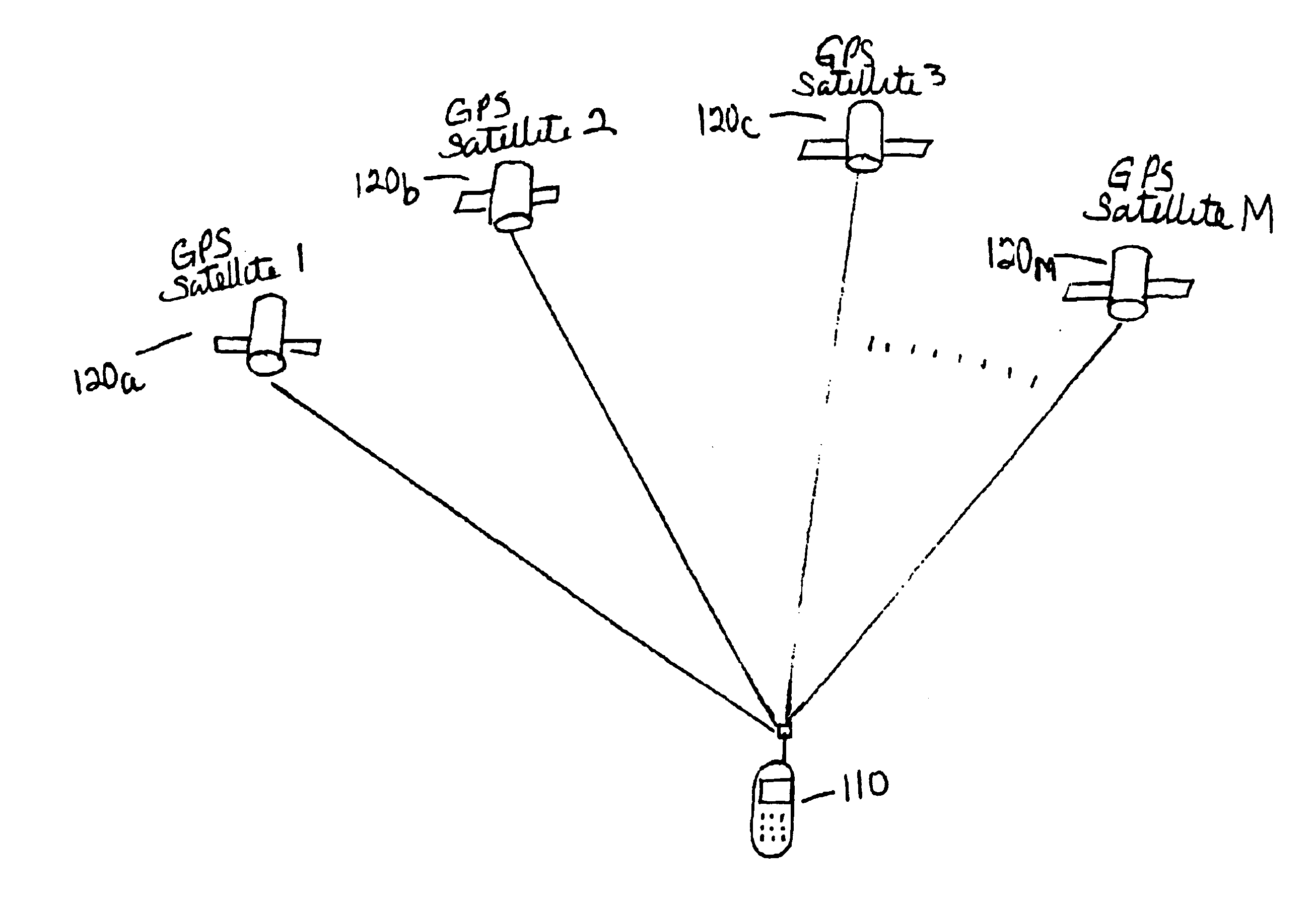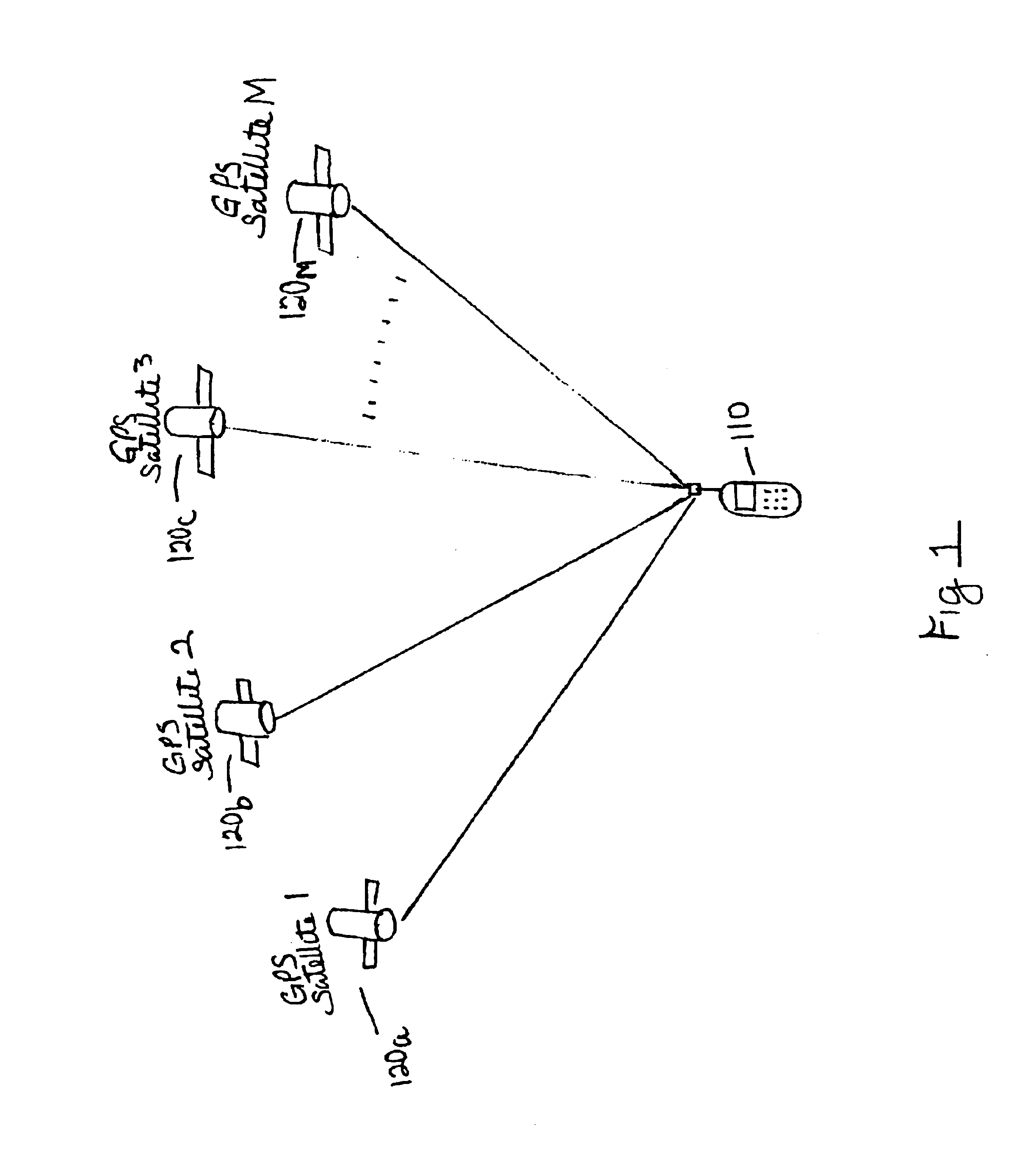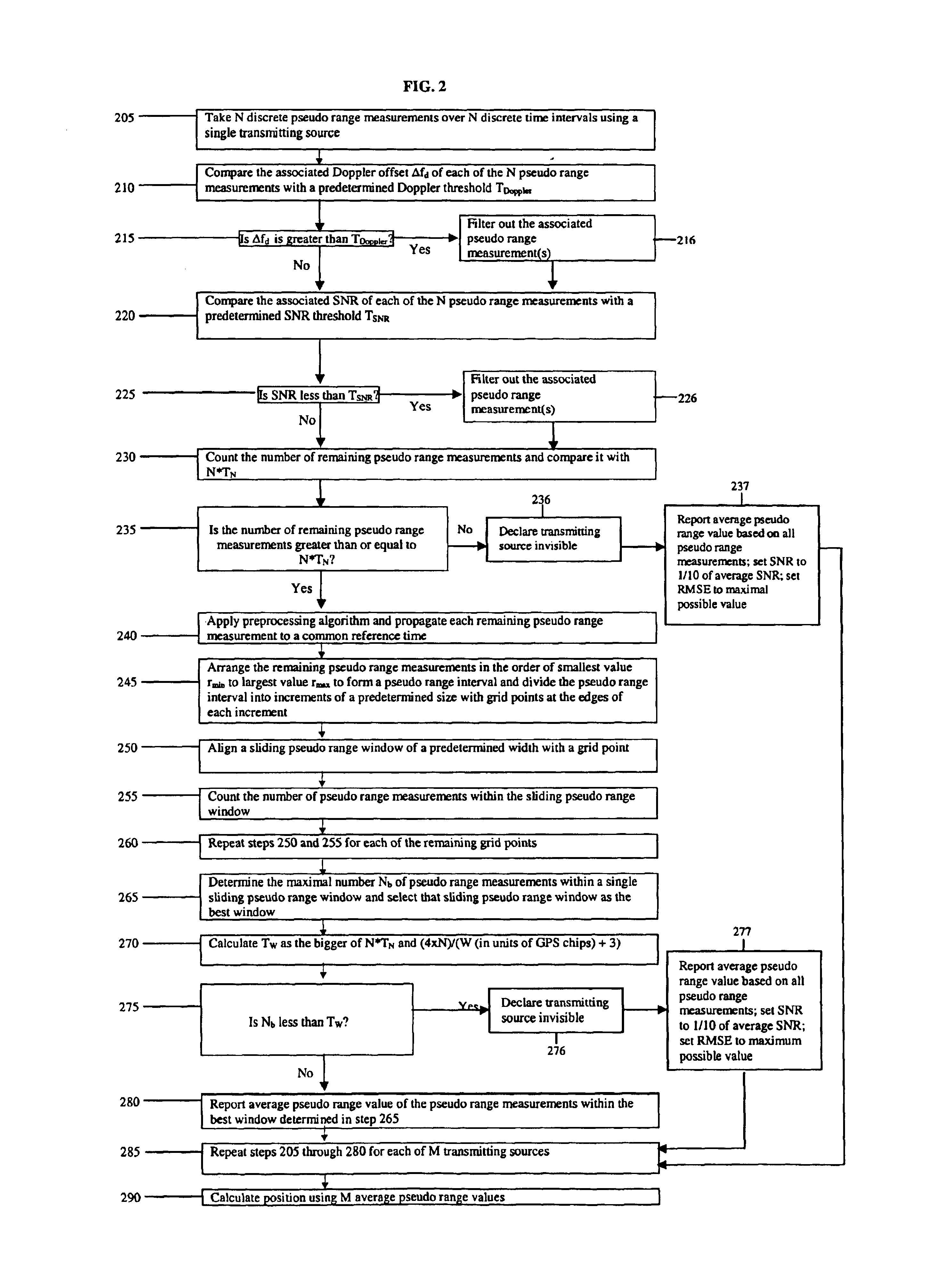Multiple measurements per position fix improvements
a technology of multiple measurements and fixation, applied in the field of determining the location of a device, can solve the problems of less accurate (, more erroneous) position determination estimate, and the vulnerability of gps receivers to occasional measurement outliers, and achieve the effect of more accura
- Summary
- Abstract
- Description
- Claims
- Application Information
AI Technical Summary
Benefits of technology
Problems solved by technology
Method used
Image
Examples
Embodiment Construction
FIG. 1 illustrates a system for position determination using transmitted signals from GPS satellites. A device 110, whose position is to be determined, receives a plurality of transmitted signals from a plurality of GPS satellites 120a-120m. The device 110 includes a receiver 112 (not shown) and a processor 116 (not shown). The implementation of the receiver 112 and the processor 116 will be known to one skilled in the art. The device 110 is any device capable of determining the arrival times of received signals with respect to a reference time. For example, the device 110 may be a mobile wireless telephone, a portable computer terminal with a wireless modem, a stand-alone GPS terminal, or any other terminal capable of receiving and processing signals from reference transmitters at known locations, such as GPS satellites, other radionavigational satellites (e.g., GLONASS, Galileo, etc.) or any other ground-based transmitters. In one embodiment, the transmitting sources are GPS satel...
PUM
 Login to View More
Login to View More Abstract
Description
Claims
Application Information
 Login to View More
Login to View More - R&D
- Intellectual Property
- Life Sciences
- Materials
- Tech Scout
- Unparalleled Data Quality
- Higher Quality Content
- 60% Fewer Hallucinations
Browse by: Latest US Patents, China's latest patents, Technical Efficacy Thesaurus, Application Domain, Technology Topic, Popular Technical Reports.
© 2025 PatSnap. All rights reserved.Legal|Privacy policy|Modern Slavery Act Transparency Statement|Sitemap|About US| Contact US: help@patsnap.com



